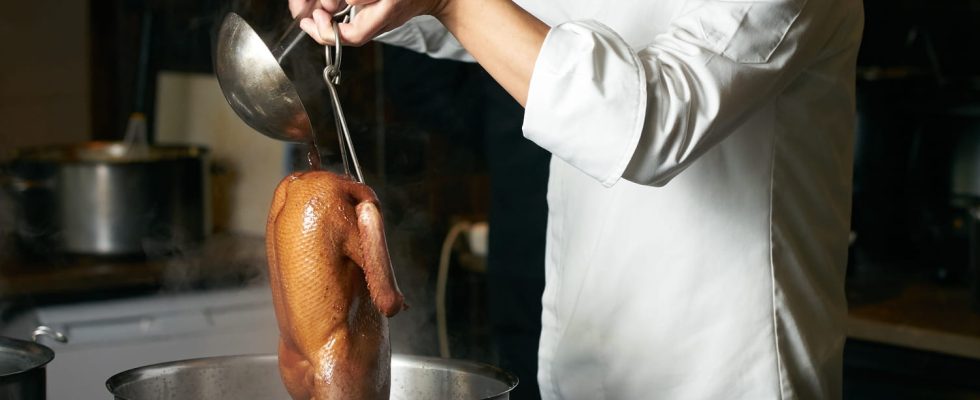The majority of restaurateurs do not respect the law requiring them to be transparent about the chickens they serve to their customers. What do you eat when you choose poultry?
What is really on our plates? While the concerns of the French about their diet are increasingly acute, questions about the quality of the meat produced, about the reality of intensive farming, are being raised acutely. Many French people choose to consume less, but better, and many choose to eat meat in restaurants, convinced, depending on the establishment chosen, that it offers quality meat.
French regulations require that professionals select their products carefully, in particular with the obligation for establishments to be completely transparent. Since March 1, 2022, restaurateurs must formally indicate the origin of poultry meats on the menu. Such an obligation has already existed for beef since 2002, pork and sheep meat have also joined the list.
However, according to a survey carried out by Anvol, the broiler poultry inter-professional association, and the APVF (Association for the Promotion of French Poultry) in 2023 among 380 French restaurants “only 15% of restaurants respond to this obligation”. In other words, 85% of restaurateurs do not respect the law and hide the origin of their chickens. In reaction to the results of the investigation, Anvol explains in a communicatedpublished in July 2023, that the lack of compliance with the obligation is mainly due to a “lack of information”.
If Anvol insisted on this regulation, it is because of a strong conviction: by clearly knowing where the meat served comes from, the customer would be more selective and would favor establishments serving French poultry. For the moment, the failure is obvious. France is the leading consumer of poultry in Europe ahead of Germany and Spain, but a very large part of the poultry consumed in France comes from abroad. According to a newsletter of Anvol dated September 2023, during the first half of 2023, “more than 45% of poultry” were imported into France. Other figures show more than 51% of chickens being imported.
Their origin, however, remains difficult to trace with certainty. As specified The echoes, most often, these chickens come from Belgium, Poland or the Netherlands. However, Jean-Michel Schaeffer, the president of Anvol, specifies that these chickens “are often repackaged, which hides their origin from Brazil, Thailand or Ukraine”. In its September 2023 bulletin, Anvol specifies that “the volumes of chicken meat arriving directly from Ukraine have increased by 75% over 6 months”.
To compensate for this lack of respect for the obligation of restaurants to indicate the origin of poultry – which is part of the desire to promote French chicken – Anvol requires better communication around this obligation as well as controls Increased efforts of the Directorate General for Competition, Consumption and Fraud Repression (DGCCRF) would allow better application of this decree.
